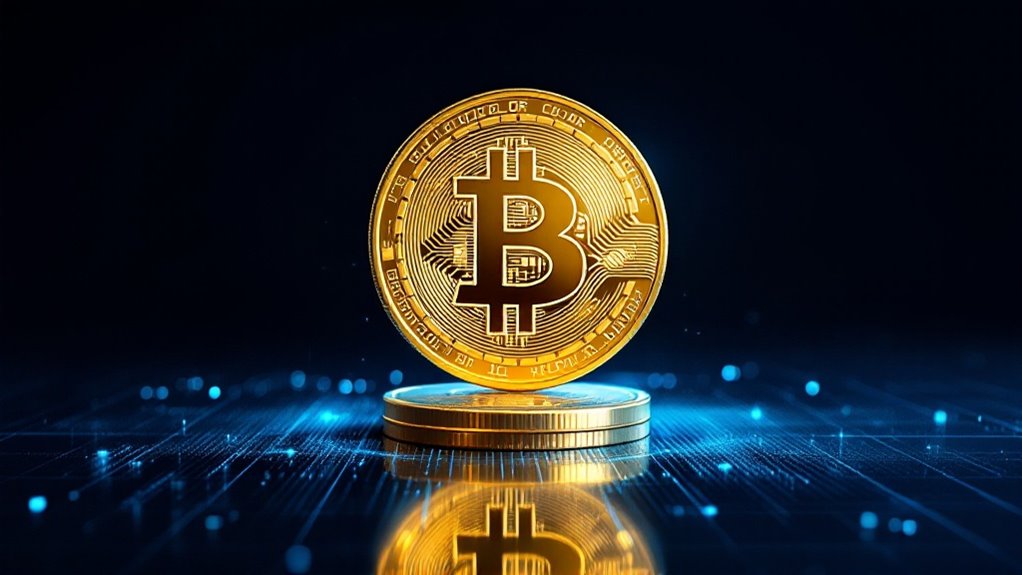Stablecoins bridge the wild west of cryptocurrency with the steady ground of traditional finance, offering digital tokens pegged to reliable assets like the US dollar or gold. Unlike Bitcoin's rollercoaster prices, these digital anchors maintain remarkable stability through reserve backing or smart contract systems. They serve as safe harbors in crypto's stormy seas, enabling traders to preserve value while enjoying blockchain's speed and efficiency. The expanding stablecoin ecosystem reveals new possibilities for global commerce and financial inclusion.

Nearly every innovation in financial technology aims to solve a fundamental problem, and stablecoins emerged as digital currency's answer to extreme market volatility. Like anchors in a stormy sea, these digital assets maintain their value by pegging themselves to stable assets such as the US dollar, gold, or other established currencies. While Bitcoin and other cryptocurrencies might swing wildly in value overnight, stablecoins aim to remain as steady as a grandfather clock.
Stablecoins stand as digital fortresses against crypto market chaos, offering the steady reliability that traditional currencies provide in the physical world.
The mechanics behind stablecoins are both elegant and complex. Most popular versions, like Tether (USDT) and USD Coin (USDC), keep traditional currency reserves to back their digital tokens. It's like having a digital warehouse where every virtual dollar is matched by a real one in a vault. Their lower transaction fees make them particularly attractive compared to traditional banking systems. These major stablecoins demonstrate remarkable stability with minimal fluctuations of just 0.03% to 0.05% from their pegs.
Others, like Dai, use a web of smart contracts and cryptocurrency collateral to maintain their stability, dancing an intricate algorithmic ballet to keep their value consistent.
In practice, stablecoins have become the workhorses of the cryptocurrency ecosystem. They serve as digital bridges between the traditional financial world and the crypto frontier, enabling traders to move seamlessly between positions without converting back to fiat currency. Picture them as financial way stations in the digital wilderness, offering refuge from market storms and a convenient medium for global transactions. The integration of DeFi platforms with traditional financial institutions has further accelerated stablecoin adoption.
The impact of stablecoins on global finance has been remarkable, with their total market capitalization exceeding $160 billion in 2024. They've become particularly valuable in emerging markets, where local currencies might be unstable or access to traditional banking services limited.
Even traditional payment giants like PayPal and Stripe have begun incorporating stablecoins into their services.
However, like any financial innovation, stablecoins face their share of challenges. Regulatory scrutiny looms large, and questions about reserve adequacy persist. The occasional de-pegging event sends shivers through the market, reminding users that even digital anchors can slip.
Despite these challenges, stablecoins continue to evolve, balancing the revolutionary promise of cryptocurrency with the steadfast reliability that global commerce demands.
Frequently Asked Questions
How Do Stablecoins Maintain Their Value During Extreme Market Volatility?
Stablecoins maintain value through overcollateralization, automated liquidation protocols, diversified reserves, and algorithmic supply adjustments. Market makers and liquidity pools help absorb volatility, while circuit breakers prevent extreme price movements during turbulence.
Can Governments Regulate or Ban Stablecoins in the Future?
Governments possess the authority to regulate or ban stablecoins through legislation and enforcement. While complete bans are possible, most jurisdictions are moving toward extensive regulatory frameworks to oversee these digital assets.
What Happens to Stablecoins if Their Backing Company Goes Bankrupt?
When a stablecoin's backing company declares bankruptcy, holders typically become unsecured creditors. They risk losing their entire investment if reserves are inadequate, and the recovery process can take years with uncertain outcomes.
Which Stablecoins Have the Highest Daily Trading Volumes Worldwide?
Tether (USDT) consistently maintains the highest daily trading volume globally, followed by USD Coin (USDC) in second place. Dai (DAI) typically ranks third, though with considerably lower volumes than the top two.
How Do Stablecoins Differ From Central Bank Digital Currencies (CBDCS)?
Stablecoins are privately issued digital tokens pegged to assets, while CBDCs are government-backed digital currencies issued by central banks. They differ in governance, regulatory oversight, stability mechanisms, and distribution methods.









